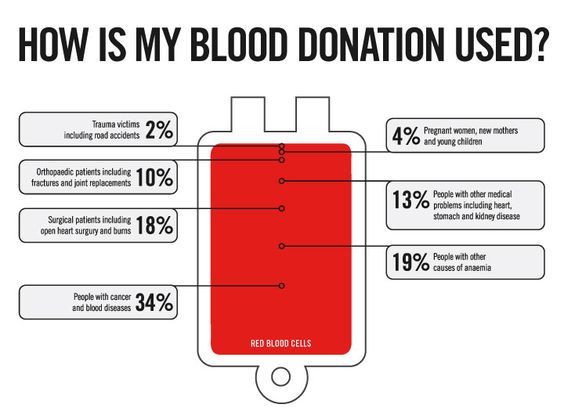

The OPO representative arranges the transportation of the organs to the hospitals of the intended recipients. Organs remain healthy only for a short period of time after removal from the donor, so minutes count. O-negative is considered the ‘universal life-saving’ blood type, but this only holds true for the ABO system (as ‘O’ blood type can donate to all blood type within the ABO system) and people who don’t have other complicated RH antigens. Organ donation does not interfere with open-casket funerals. Whole blood donors are eligible to give blood every eight weeks. And O- and O+ blood are both extra special when it comes to traumas where there is no time for blood typing.

O negative is the universal blood type, meaning that anyone can receive your blood. First, organs are recovered, and then additional authorized tissues such as bone, cornea, and skin. Types O negative and O positive are best suited to donate red blood cells. The surgical team removes the organs and tissues from the donor's body in an operating room. (The medical team trying to save the patient’s life and the transplant team are never the same team.) The condition of each organ is carefully monitored by the hospital medical staff and the OPO procurement coordinator.Ī transplant surgical team replaces the medical team that treated the patient before death. Machines keep blood containing oxygen flowing to the organs. While the search for matching recipients is under way, the deceased donor's organs are maintained on artificial support. For plasma and platelet transfusions the system is reversed: AB positive is the universal platelet donor type while both AB positive and AB negative are universal plasma donor types.Īs for what happens between an organ donor dying and their organs being transplanted, Type O negative is often cited as the "universal donor" but this only refers to red cell and whole blood transfusions. For plasma and platelets, the situation is reversed.
#A negative blood type can donate to full
Well, the chart says that they are the only blood type that can do a full blood transfusion to other AB types.Īlso, organs aren't that easy to find - there are more people waiting for an organ than there are organs.Īlso, the Wikipedia article on blood donation says that this chart is only applicable to red blood cells.

Those four main blood groupsA, AB, B, and Ocan be Rh-positive or. Type O blood is required and must be available in inventory for newborn babies and emergency patients. Type AB-positive blood is called the universal recipient type because a person who has it can receive blood of any type. doctor with mask and face shield holding up vial of blood. Patients with any blood type can receive O negative blood. (image from Owlcation: The Basics of Blood and Blood Typing - Wikipedia file)ĪB blood types can only donate to other AB blood types, but AB blood types can receive from other blood types, so what is the point of being an AB donor. Negative blood types are also somewhat protected from the virus. According to the standard blood compatibility chart:


 0 kommentar(er)
0 kommentar(er)
